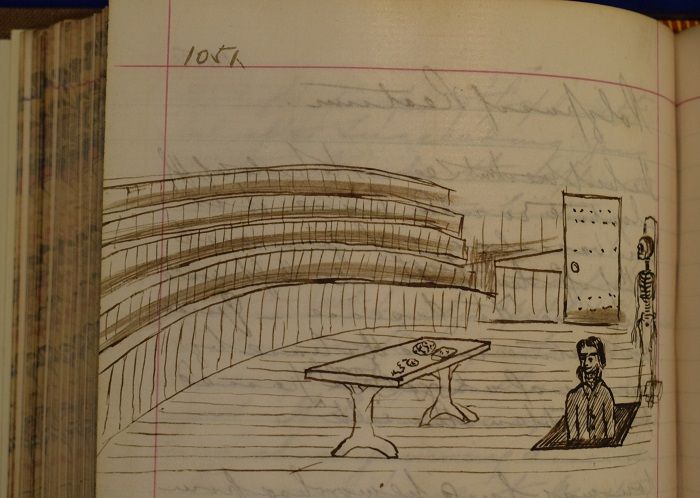
https://humap.me/
#GLAMA #DigitalHumanities #EdTech #CitizenScience #CitizenHumanities

Here are some of the amazing projects on our platform 🧵
An archival history of #Tampa #Florida created by the University of South Florida tampa-through-time.humap.site
#USHistory #USA
Our #RecordOfTheDay is from the @wienerlibrary.bsky.social #Humap
Learn more www.refugeemap.org/map/reco...

Our #RecordOfTheDay is from the @wienerlibrary.bsky.social #Humap
Learn more www.refugeemap.org/map/reco...
Our #RecordOfTheDay is from the #IslingtonsPride #Humap
See more islingtonspride.com/humap/
#Islington #BritishHistory #LGBTQHistory #LGBTHistory #QueerHistory

Our #RecordOfTheDay is from the #IslingtonsPride #Humap
See more islingtonspride.com/humap/
#Islington #BritishHistory #LGBTQHistory #LGBTHistory #QueerHistory
-Bill Bryson
Pictured: Europe in 1912, from the @wienerlibrary.bsky.social #Humap
Explore at www.refugeemap.org/map/over...

-Bill Bryson
Pictured: Europe in 1912, from the @wienerlibrary.bsky.social #Humap
Explore at www.refugeemap.org/map/over...

For our next event in the series Ruthie Kaplan will discuss her research following the spatial conduct of Łódź’s Jewish middle—and upper-class in the interwar period.
Open for booking now:

For our next event in the series Ruthie Kaplan will discuss her research following the spatial conduct of Łódź’s Jewish middle—and upper-class in the interwar period.
Open for booking now:
Our #RecordOfTheDay is from the #MappingMemory #Humap
See more www.mappingmemory.org/map/r...
#OralHistory #LiverpoolDock #LiverpoolWaterfront #EnglishHistory #BritishHistory #UK #UnitedKingdom #IndustrialHistory

Our #RecordOfTheDay is from the #MappingMemory #Humap
See more www.mappingmemory.org/map/r...
#OralHistory #LiverpoolDock #LiverpoolWaterfront #EnglishHistory #BritishHistory #UK #UnitedKingdom #IndustrialHistory
🗺️ Learn more humap.me
#GIS #HGIS #GLAM #DigitalHumanities

🗺️ Learn more humap.me
#GIS #HGIS #GLAM #DigitalHumanities
Our #RecordOfTheDay is from the @scarbsmuseums.bsky.social #Humap
See more www.scarboroughatlas.org/ma...

Our #RecordOfTheDay is from the @scarbsmuseums.bsky.social #Humap
See more www.scarboroughatlas.org/ma...
#Museum30 #Sketchbook

#Museum30 #Sketchbook

www.layersoflondon.org/map/...
#London #Trails #WalkingTrails #CrystalPalace #SouthLondon #Football #FootballHistory

www.layersoflondon.org/map/...
#London #Trails #WalkingTrails #CrystalPalace #SouthLondon #Football #FootballHistory

The United States Exploring Expedition of 1838–1842
Low Archipelago or Paumotu Group by the U.S. Ex. Ex. 1839. (Philadelphia: Lea & Blanchard. 1845
#DavidRumseyMapCollection
tinyurl.com/yvbph5z5
![[portion] of "Low Archipelago or Paumotu Group by the U.S. Ex. Ex. 1839. Philadelphia: Lea & Blanchard. Year 1845.
Narrative of the United States Exploring Expedition During the Years 1838, 1839, 1840, 1841, 1842. By Charles Wilkes, U.S.N. Commander Of The Expedition, Member Of The American Philosophical Society, Etc. In Five Volumes, And An Atlas. Philadelphia: Lea & Blanchard. 1845. (on verso) Entered ... 1844, By Charles Wilkes ... District of Columbia.](https://cdn.bsky.app/img/feed_thumbnail/plain/did:plc:q66r3vy7xepmx62ti4vt7uzb/bafkreiaxl4q7xgm2p6nenyb7bdtjenczfkndsqdeo546racmgxxar3tcsm@jpeg)

The United States Exploring Expedition of 1838–1842
Low Archipelago or Paumotu Group by the U.S. Ex. Ex. 1839. (Philadelphia: Lea & Blanchard. 1845
#DavidRumseyMapCollection
tinyurl.com/yvbph5z5
www.compactmag.com/article/the-...

www.compactmag.com/article/the-...
Book your place: www.balh.org.uk/event-balh-a...

Book your place: www.balh.org.uk/event-balh-a...
Are you a professional or researcher working with #3D cultural heritage? Apply now for the #3DBigDataSpace Outreach Synergy Call, which focuses on on transforming 3D heritage data into public-facing outreach experiences.
Get the full details & apply ➡️ bit.ly/3LrE8xP

Are you a professional or researcher working with #3D cultural heritage? Apply now for the #3DBigDataSpace Outreach Synergy Call, which focuses on on transforming 3D heritage data into public-facing outreach experiences.
Get the full details & apply ➡️ bit.ly/3LrE8xP


It lists a succession of cities, their rulers and the length of their reigns from the beginning of time to around 1800 BCE.

It lists a succession of cities, their rulers and the length of their reigns from the beginning of time to around 1800 BCE.
Abstracts of >200 words due by the 1 February 2026
#18thc #skystorians 🗃️
Conference at the University of Amsterdam
Monday, 15 June 2026
How do material conditions shape how & what we know about the natural world?
#earlymodern #C18L
1/6
Abstracts of >200 words due by the 1 February 2026
#18thc #skystorians 🗃️

Details below:
www.birmingham.ac.uk/events/arts-...

Details below:
www.birmingham.ac.uk/events/arts-...
www.digital-humanities.manchester.ac.uk/connect/even...
Next up on November 12: @ehameeteman.bsky.social on desalination
#envhist #envhum #skystorians #DH @kmcdono.bsky.social

www.digital-humanities.manchester.ac.uk/connect/even...
Next up on November 12: @ehameeteman.bsky.social on desalination
#envhist #envhum #skystorians #DH @kmcdono.bsky.social


